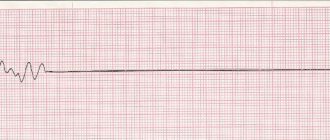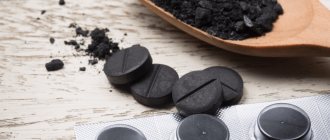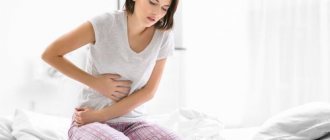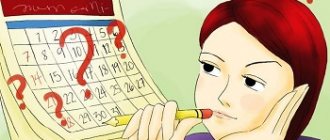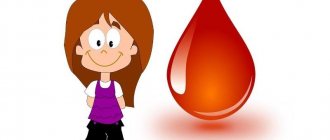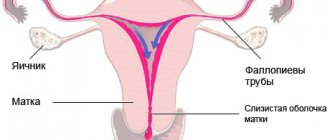Request stop. Should I turn off my period while on vacation?
AiF Health No. 30 07/25/2017
I really want to go on vacation to the sea and swim to my heart's content! But what if this time coincides with your period? Should I put up with it or use modern hormonal means, with the help of which this trouble can be “cancelled” for a while?
Today, women are increasingly and more confidently choosing the second option, especially since these products are widely available, and articles appear in the press every now and then that there is no need to be afraid of hormones: they are our reliable friends and helpers. Let's figure out if this is really so.
Our expert is the head of the branch of the State Clinical Hospital named after. V.V. Veresaeva, obstetrician-gynecologist of the highest category, candidate of medical sciences Ekaterina Kiryanova.
Games without a mind
In cases where a woman is already taking combined contraceptives prescribed by a doctor, the problem is solved quite simply: instead of the usual seven-day break, she must immediately start taking pills from a new pack.
If a woman has not taken contraceptives before, she can consult a doctor who will help you choose the pills that are most suitable and start taking them according to the same regimen. In this case, menstruation does not begin. Then you can return to the previous course or cancel it.
Many people begin to practice critical days postponed for the duration of certain events on a regular basis: in the case of a tourist trip, competitions, going to the pool or spa, romantic dates or job interviews. Moreover, not everyone consults a doctor about this. Some people get by on the advice of a friend or a pharmacist at the nearest pharmacy. It would seem so simple and convenient: take a pill - and no premenstrual syndrome and subsequent bleeding.
Such experiments with the female menstrual cycle are not as safe as they might seem at first glance. By “cancelling” or postponing the onset of menstrual periods at our discretion, we inevitably interfere with one of the most important functions for humans - the reproductive system. She is quite fragile and vulnerable. Such games of playing masters of nature can end very badly.
Do not risk!
The most serious complications of taking hormonal contraceptives, sometimes fatal, are venous and arterial thrombosis and hepatic coma, when the patient does not always have time to be taken to the hospital. In obstetrics and gynecology, these are primarily menstrual irregularities, uterine bleeding, and various neoplasms. Against this background, problems may arise with the onset of pregnancy, including infertility. Negative consequences are also possible from the mammary glands.
Obstetricians and gynecologists know many such stories. They are often approached by young women who, while taking hormonal drugs on their own, have experienced thromboembolism of small branches of the pulmonary artery literally in the first cycle, and this is a deadly condition. Even more often, as a result of taking this type of medication, menstruation stops completely, amenorrhea occurs, which also has to be treated for a long time and not always successfully.
NETTLE - URTICA DIOICA L.Sem. nettles - URTIACEAE
DESCRIPTION. A perennial herbaceous dioecious plant, densely covered with stinging hairs and a creeping, woody rhizome. The rhizome is long, creeping, branched. The stem is erect, tetrahedral, grooved. Leaves are opposite, petiolate, elongated-pointed-ovate, with large stipules. The flowers are small, green, unisexual, sessile, in small balls, collected and branched, spike-shaped, pendulous axillary inflorescences. The perianth of staminate flowers is four-parted with outstretched oval pale green lobes and four opposing stamens. The perianth of pistillate flowers consists of two outer short leaves and two inner ones, which grow after flowering. The fruit is an ovoid yellowish-gray nut enclosed in the remaining perianth. Blooms from June to autumn; the seeds ripen in July.
RAW MATERIALS. The leaves of stinging nettle (Folium Urticae) are used in treatment; they are elongated, ovate-pointed, up to 17 cm long and up to 7 cm wide, with large serrates at the edges. The leaves should be dark green; browned leaves no more than 5%, moisture no more than 14%, stems, inflorescences and other parts of nettle no more than 5%, parts smaller than 3 mm no more than 10%. Shelf life up to 2 years.
DISTRIBUTION AND PROCESSING. It is found as a weed near homes, in vacant lots, roadsides, forest clearings, along ravines and river banks.
Its leaves are collected with gloves on during flowering. It is more convenient to mow or cut off the leafy stems with sickles and let them wither for several hours. After this, the leaves that have lost their pungency are torn off by hand. They are dried under awnings, in attics or in dryers. Drying in the sun is not allowed, as this causes the raw material to lose its green color.
CHEMICAL COMPOSITION. Nettle leaves are multivitamin raw materials. They contain up to 0.2% vitamin K, vitamin B2, up to 0.6% ascorbic acid, up to 50 mg% carotenoids. In addition, the leaves contain the glycoside urticin, tannins, pantotheca, gallic and formic acids, 2-5% chlorophyll and various mineral salts.
APPLICATION. Nettle is used for hypovitaminosis, internal bleeding, as a diuretic, for diarrhea, fever, gout, diabetes, rheumatism, chronic skin diseases, kidney diseases, bladder, liver, kidney stones, as well as for the treatment of external skin diseases and strengthening hair.
Extracts, decoctions, and powders are prepared from nettle, which are used for various types of bleeding.
Nettle infusion lowers blood sugar levels.
Stinging nettle preparations have a hemostatic effect. They enhance blood clotting, help increase hemoglobin in it, and increase the tone of smooth muscles. They are successfully used for various internal bleeding (uterine, hemorrhoidal, gastric), as well as externally for the treatment of chronic ulcers.
The hemostatic effect of stinging nettle is explained by the presence of vitamin K in it. Chlorophyll determines its tonic effect, enhances basal metabolism, stimulates granulation and epithelization of affected tissues. Preparations of nettle leaves are also effective for hypo- and avitaminosis; the active substances of nettle lower blood sugar.
Nettle is used in the form of an infusion or liquid extract (Extractum Urticae fluidum). The leaves are part of stomach and vitamin preparations.
In folk medicine, stinging nettle preparations are recommended for anemia, atherosclerosis, muscle and joint rheumatism, dropsy, itchy skin eczema, diseases of the biliary tract and liver, hemorrhoids, habitual constipation, stomach colic, digestive disorders; as a means of increasing milk production in nursing mothers. Nettle leaves, when applied externally, reduce secretion from wounds and help (when rubbed in) with fever and rheumatism.
RECIPES
Infusion:
a) 1 tbsp. Pour 1 cup of boiling water over a spoonful of fresh or dried nettle leaves, leave for 1 hour, strain. Take 1 tbsp. spoon 3-4 times a day 30 minutes before meals as a hemostatic and vitamin remedy;
b) 1 tbsp. Pour 1 cup of boiling water over a spoonful of nettle fruits and roots, leave for 1 hour, strain. Take 2-3 tablespoons 3-4 times a day as an anthelmintic.
Fresh Juice
Take 1 teaspoon with water 3 times a day for vitamin deficiency.
Infusion of the mixture:
2 tbsp. spoons of a mixture of nettle leaves, currant berries, rose hips, carrot roots (all equally) pour 2 cups of boiling water, leave for 30 minutes, strain. Take ½ cup 4 times a day as a multivitamin.
USE IN NUTRITION
Young leaves and shoots of nettle are used to prepare green borscht, puree, seasoning for meat and fish dishes, and caviar for potato dishes.
Nettle salad with egg
200 g nettles, 2 boiled eggs, 2 tbsp. spoons of sour cream, salt, vinegar.
Wash the nettle leaves, blanch for 3-5 minutes, place in a sieve, chop with a knife, add slices of boiled egg, salt, season with vinegar and sour cream.
Nettle salad with spinach
Wash young nettle leaves and tops, mix with chopped onions and crush in a wooden mortar. Add finely chopped raw spinach, parsley, vegetable oil, lemon juice and salt.
Place the salad in a heap in a salad bowl and garnish with slices of hard-boiled eggs.
Yakhnia from nettles
(from Bulgarian cuisine)
500 g nettles, 2 onions, 2 tbsp. spoons of vegetable oil, 100 g of walnuts.
Wash the nettles, pour boiling water over them and cook in salted water until tender. Sauté finely chopped onion, add nettles, rub through a sieve, and simmer until thickened. Sprinkle with nuts before serving.
Pickled nettle
5 kg nettles, 100 g salt, 150 g carrots, 150 g apples, 50 g lingonberries or cranberries, 2 g cumin, bay leaf, allspice.
Wash young nettle shoots and place in an enamel or oak bowl along with carrots, apples, lingonberries or cranberries, caraway seeds, bay leaves, pepper and salt. Then apply pressure. After 2 weeks, nettle can be used in cabbage soup, for seasoning meat and fish dishes.
Dry leaves and shoots of stinging nettle
Wash young leaves and shoots and dry under a tent. Store in paper bags. Add to soups, cabbage soup, meat sauces, cabbage rolls.
Correct solution
A woman who seems to have so cleverly deceived her nature is actually deceiving herself. There are no medical indications for canceling menstruation, even during the Olympic Games.
Doctors, who often have to deal with the consequences of uncontrolled use of hormonal drugs, come to the conclusion: it is better to arrange a vacation so that it does not coincide with critical days than to reshape your body for the sake of a vacation.
And if this was not possible, there are alternative ways to mitigate this condition. Today, pharmacies sell special fortified preparations for women that help them survive PMS easier and make bleeding less profuse and painful. It is better to take them in courses, for at least two to three months, and you can also take them in the summer.
In order not to deprive yourself of the opportunity to bathe, there are tampons. Gynecologists do not prohibit swimming in reservoirs if, after going ashore, the tampon is immediately replaced with a new one.
Let's not forget that periods are not forever. They will definitely end, but good memories of the vacation will remain, especially if they have no health consequences.
Nettle leaves crushed raw material 50g
Name
Nettle leaves.
Release form
Crushed raw materials 50 g per pack.
Pharmacodynamics
Herbal product. An infusion of nettle leaves has an anti-inflammatory and diuretic effect, increases the tone of the uterus.
Pharmacokinetics
No data available, the drug contains various biologically active substances.
Indications for use
Orally: as a diuretic in the complex therapy of mild inflammatory diseases of the urinary tract (cystitis, urethritis); symptomatic treatment of joint pain due to arthritis and arthrosis; as part of complex therapy for heavy menstrual bleeding after consulting a doctor.
Directions for use and doses
Inside. Crushed raw materials. 4 g (1 tablespoon) of leaves are placed in an enamel bowl, pour 200 ml (1 glass) of boiled water at room temperature, cover with a lid and heat in boiling water (water bath) for 15 minutes. Cool at room temperature for 45 minutes, filter. The remaining raw materials are squeezed out. The volume of the resulting infusion is adjusted to 200 ml with boiled water. Adults and children over 12 years of age take 2 tablespoons warm orally 3-4 times a day 30 minutes before meals. It is recommended to shake the infusion before use. The duration of the course of treatment is determined by the doctor, taking into account the characteristics of the disease, the achieved effect and tolerability of the drug.
Use during pregnancy and lactation
Due to the lack of safety data, use during pregnancy and lactation is not recommended.
Precautionary measures
If symptoms persist or worsen while using the drug, you should stop using the drug and consult a doctor. If joint pain is accompanied by swelling of the joints, redness of the skin or fever, you should consult a doctor. If, while taking the drug, symptoms such as fever, urinary problems, spastic pain, or blood in the urine occur, you should stop taking the drug and consult a doctor.
Interaction with other drugs
There is no information about possible interactions. If you are taking other medications at the same time, you should consult your doctor.
Contraindications
Hypersensitivity. Increased blood clotting, tendency to thrombosis; glomerulonephritis; bleeding caused by cysts, polyps, tumors of the uterus and its appendages. Diseases that require restriction of fluid intake (for example, severe heart or kidney disease). Pregnancy, lactation period, children under 12 years of age.
Compound
Nettle leaves: crushed raw materials.
Side effect
Allergic reactions (itching, skin rash, urticaria), moderate gastrointestinal disorders (nausea, vomiting, diarrhea), hypercoagulation are possible. If any adverse reactions occur, including those not listed in this instruction, you must stop taking the medicine and consult a doctor.
Buy Nettle leaves, raw materials, 50g per pack in the pharmacy
Price for Nettle leaves, raw materials, 50g per pack
Instructions for use for Nettle leaves, raw materials 50g in a pack
Stinging nettle
Description
Stinging nettle Urtica dioica. Stinging nettle is a perennial herbaceous plant, up to 170 cm high, with a long creeping branched rhizome and thin roots at the nodes. Stems are erect, tetrahedral, grooved. Leaves are opposite, petiolate, ovate-lanceolate, large-serrate. The stem and leaves are covered with long, stinging and short, simple hairs. The hair shells are silicified and fragile, so formic acid and histamine leak out of a broken hair. The flowers are small.
Chemical composition
Nettle leaves contain carotenoids (β-carotene, violaxanthin, xanthophyll, xanthophyll epoxide); vitamins C, K, B1, B2; tannins (3.2%); chlorophyll (up to 5%); glycoside urticin, flavonoids (1.96%): quercetin, isorhamnetin, kaempferol; organic acids (oxalic, formic, fumaric, lactic, succinic, citric, quinic); phenolcarboxylic acids (caffeic acid, gallic acid, coumaric acid, ferulic acid); starch (up to 10%); alkaloids (0.010-0.29%): nicotine, histamine, acetylcholine, 5-hydroxytryptamine; coumarin esculetin; macro- and microelements.
Pharmacological properties
An infusion of nettle leaves has a hemostatic effect, increases uterine tone, normalizes the ovarian-menstrual cycle, reduces blood loss during menometrorrhagia, accelerates blood clotting, increases the content of hemoglobin, platelets and red blood cells in the peripheral blood.
In addition, the plant has other medicinal properties. Medicinal forms of nettle have vasoconstrictor, choleretic, vitaminizing, diuretic and anti-inflammatory properties, increase the regeneration processes of the mucous membranes of the gastrointestinal tract. Stinging nettle preparations activate metabolism, enhance the action of many enzymes and enzymes, regulate the tone of the endocrine, nervous, cardiovascular and digestive systems of the body. The hemostatic properties of the plant are associated with the presence of vitamin K in the leaves, which stimulates the production in the liver of one of the most important blood clotting factors - prothrombin.
The amount of active ingredients, mainly vitamins and iron salts contained in nettle, normalize lipid metabolism in the body and have a stimulating effect on the formation of red blood cells (erythropoiesis).
Nettle leaves enhance the activity of the digestive glands and the secretion of milk in nursing women, and have an insulin-like effect (significantly reduce sugar levels in the blood and urine).
Chlorophyll in nettle leaves is persistent, has a stimulating and tonic effect, enhances basic metabolism, and also increases muscle tone of the uterus and intestines, improves the activity of the cardiovascular system and respiratory center; stimulates granulation and epithelization of affected tissues.
In case of hemorrhagic metroendometritis, nettle promotes faster resorption and elimination of the inflammatory process.
An ointment based on nettle extract has many beneficial properties and is used for antibiotic-resistant skin diseases. The ointment has a phytoncidal effect on Staphylococcus aureus and hemolytic streptococcus.
Plant preparations can serve as a means of preventing atherosclerosis, anemia, bronchial asthma, and vitamin deficiency. In medicine, infusions, decoctions, steams, tinctures, extracts, and teas are prepared from nettle leaves as a remedy.
Application
Nettle preparations are used for heavy menstrual bleeding, for light bleeding in the post-coagulation period of treatment of cervical erosion, for menopausal bleeding, subserous fibroids, for insufficient involution of the uterus after childbirth and abortion.
A decoction of the leaves is taken for diseases of the liver and biliary tract and for helminthic infestation. In dental practice – for periodontitis and gingivostomatitis. In dermatology, the plant is used externally for eczema, skin rashes, vitiligo (rubbed into areas of depigmentation); for furunculosis, festering wounds, trophic ulcers, for the treatment and prevention of seborrhea and hair loss, as well as for infected wounds, nosebleeds, burns, traumatic skin lesions (bruises, etc.).
In Milamed products, nettle is included in HONDRAFORS.


